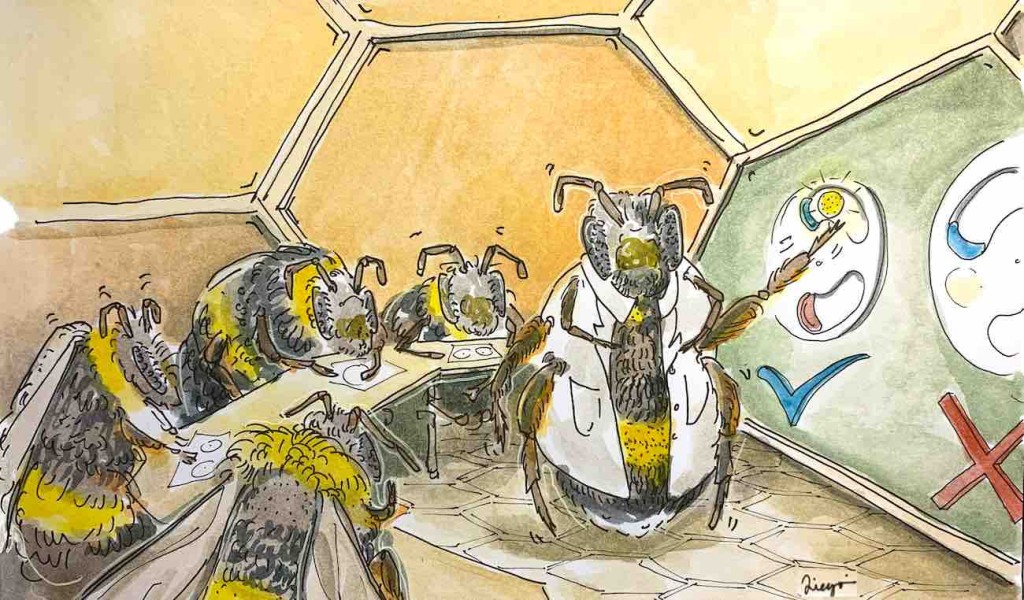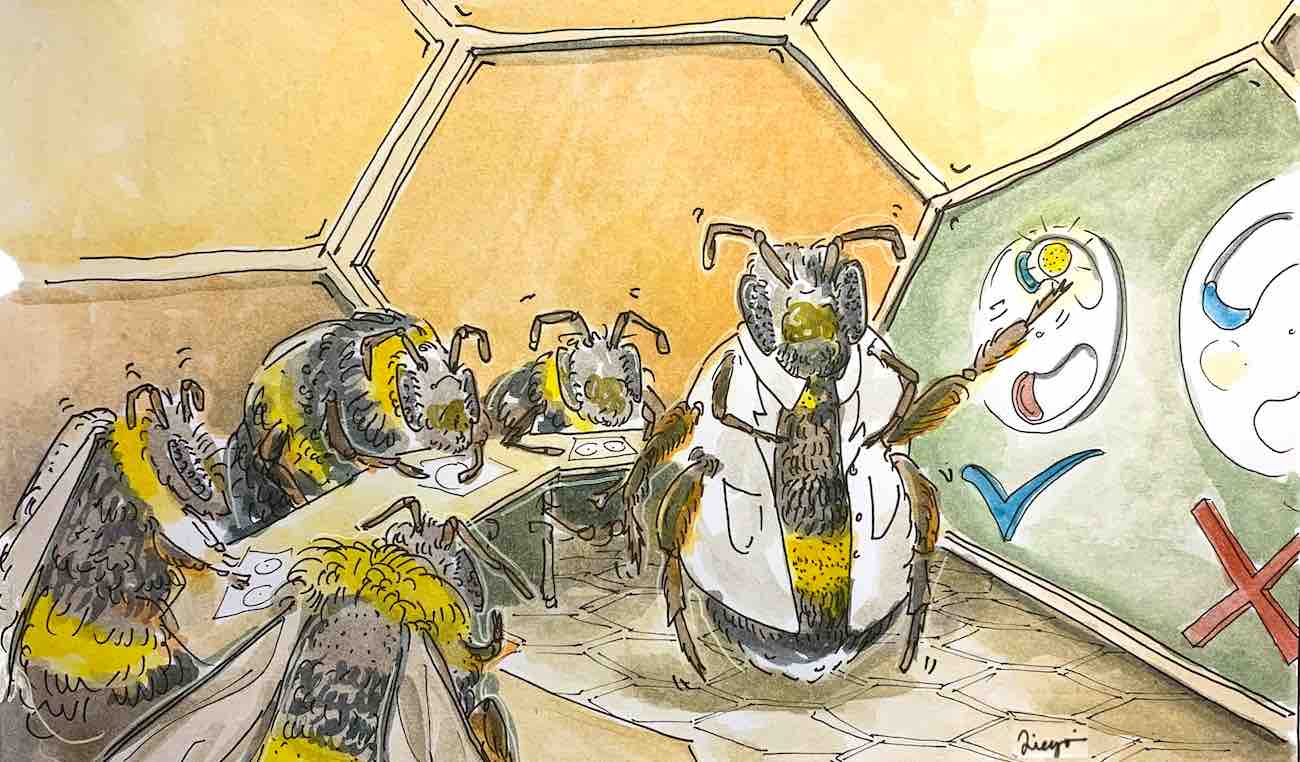
After a few bees figured out how to get a sweet treat from a locked container, the whole hive eventually learned how by watching and learning.
The research, led by Queen Mary University of London and published in PLOS Biology, provides strong evidence that social learning drives the spread of bumblebee behavior—in this case, precisely how they forage for food.
A variety of experiments were set up to establish this. The researchers designed a two-option puzzle box that could be opened either by pushing a red tab clockwise or a blue tab counter-clockwise to reveal a 50% sucrose solution reward.
‘Demonstrator’ bees were trained to use either the red or blue tabs, with ‘observer’ bees watching. When it was the observers’ turn to tackle the puzzle, they overwhelmingly and repeatedly chose to use the same method that they had seen, even after discovering the alternative option.
This preference for the taught option was maintained by whole colonies of bees, with a mean of 98.6% of box openings made using the taught method.
“Bumblebees and indeed invertebrates in general, aren’t known to show culture-like phenomena in the wild,” said lead author Dr. Alice Bridges. “However, in our experiments, we saw the spread and maintenance of a behavioral ‘trend’ in groups of bumblebees—similar to what has been seen in primates and birds.”
The importance of social learning to the acquisition of puzzle box solutions was also illustrated through the control group, which lacked a demonstrator. In this group, some bees managed to open the puzzle boxes, but did so far fewer times than those who benefitted from seeing another bee do it first.
MORE ANIMAL BEHAVIOR STORIES: South American Songbird Hailed as Most Expert Musician of the Animal Kingdom (LISTEN)
The median number of boxes opened in a day by the observer bees with a demonstrator was 28 boxes a day, whereas it was only 1 for the control colony.
In an additional experiment, the researchers put both ‘blue’ and ‘red’ demonstrators into the same populations of bees. In the first population, 97.3% of the 263 incidences of box-opening by observers by day 12 used the red method. In the second population, observers preferred the blue method over the red on all days except one.
MORE BEE STORIES: Watch Woman Save Bees By Rescuing Hives From Old Buildings With Her Bare Hands
In both cases, this demonstrated how a behavioral trend might emerge in a population in the first place—for the most part, due to experienced bees retiring from foraging and new learners arising, rather than any bees changing their preferred behavior.
“The behavioral repertoires of social insects like these bumblebees are some of the most intricate on the planet, yet most of this is still thought to be instinctive,” Dr. Bridges added. “Our research suggests that social learning may have had a greater influence on the evolution of this behavior than previously imagined.”
SHARE This Remarkable Insight With Your Hive On Social Beedia…




















